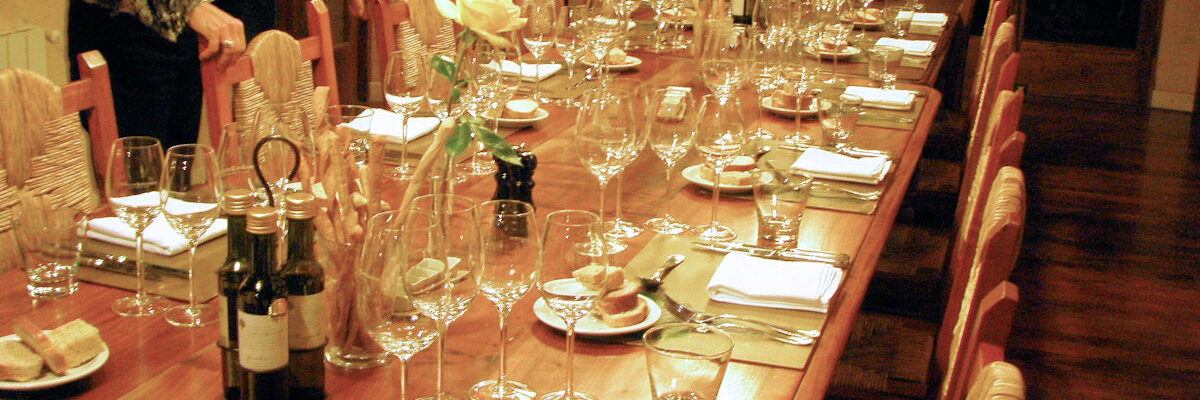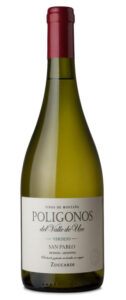 Zuccardi “Polígonos” Verdejo 2023, San Pablo Zuccardi “Polígonos” Verdejo 2023, San Pablo
Verdejo, a white grape variety, has a rich history in Spain. Introduced around the 11th century, it was initially used for Sherry-like wines. In the 1970s, a fresher style emerged, and the Castilla y León region, particularly around Rueda, gained recognition for its Verdejo wines. These aromatic, medium-bodied whites are excellent alternatives to Sauvignon Blanc and Pinot Grigio. I’m fairly certain that Zuccardi was the first to commercially produce Verdejo in Argentina, and though there may be others produced here now, I haven’t encountered one.
The intent behind this pairing was to show two wines from the same general area (San Pablo and Tupungato are neighboring areas, though the vineyards are about 4 miles apart), same vintage, same fermentation method, but different grapes.
This wine is light to medium bodied, with lovely spiced apple fruit, and hints of paraffin (think scented candle) and “barnyard” – both in a good way. Moderately high acidity, and a long finish. It’s absolutely delightful on its own, but I’m thinking chicken off the grill as a perfect match, and I think it even has the umph to stand up to something like buffalo wings as an alternative to beer! Retail prices here seem to run between 20-25,000 pesos, or $13-16. |
 Zuccardi “Polígonos” Sauvignon Blanc 2023, Tupungato Zuccardi “Polígonos” Sauvignon Blanc 2023, Tupungato
Sauvignon Blanc is obviously a better known white wine grape variety. It’s known for its vibrant flavors and lively acidity. It grows nearly everywhere, from western France to emerging wine regions worldwide. The wines it produces are typically light in color, aromatic, and dry. Green herbal notes, such as freshly cut grass, bell pepper, and asparagus are common, along with tropical passion fruit, grapefruit, or even mango.
This is pretty classic Sauvignon blanc, the sort that most trained wine pros would pick out instantly. It’s got a strong green bell pepper and fresh cut grass aroma upfront, followed by kiwi fruit and lemon zest. Light bodied, fairly high acidity, and a medium finish. Personally I found it a bit aggressive, and while I could see pairing it with richer seafood or chicken dishes with herbal butter sauces, using the acidity to cut that richness, I can think of many other Sauvignon Blancs I’d probably pick first. Pricing is the same as above. |
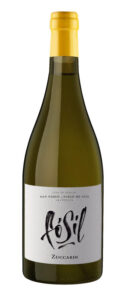 Zuccardi “Fosíl” 2022, San Pablo Zuccardi “Fosíl” 2022, San Pablo
This next pairing was intended to show “terroir” differences. Both wines are 100% Chardonnay, both were harvested at basically the same time and fermented in the same way, but while they are both from the same general region of Mendoza, they are from areas that have different soils and different exposure to winds and weather.
Chardonnay probably doesn’t need to be introduced any more than Sauvignon blanc did, but, what the heck. It’s a white grape with its origins in Burgundy, France. It has become the most widely planted white wine grape globally. Chardonnay wines can range from crisp and mineral expressions, such as Chablis from Burgundy, to full-bodied and buttery styles like Meursault. Techniques like oak aging, malolactic fermentation, and lees stirring add layers of flavor and complexity. Whether grown in the Old World or the New World, Chardonnay is a great canvas for expressing both terroir and winemaking techniques.
I found this wine to be kind of austere – with strong notes of minerals, and dry leaves, with pear and fennel notes coming in almost like an afterthought. Part of it is that the wine is still young, but it’s also from a colder stretch of Mendoza which tends to mute the fruit in favor of earth related qualities. It’s fairly light bodied, surprisingly so – I guess one might compare it almost to being Chablis-like, matching well with seafood, from raw, to cold, to hot off the grill. It’s a bit more upscale, coming in around the 90-100,000 peso range, $60-65. |
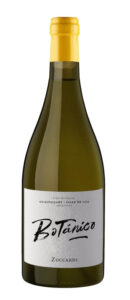 Zuccardi “Botánico” 2022, Gualtallary Zuccardi “Botánico” 2022, Gualtallary
Even after more than thirty years working with wine, the differences that a short distance in terroir can make in a wine continue to fascinate me. Here we have, as noted, a wine made from the same grape, from the same altitude, made at the same time, using the same fermentation and aging process, and the only solid difference being that the grapes are grown about a mile and a half apart. And yet, completely different in character.
This wine is far richer, medium bodied, with a long, lingering finish. An impact of ripe quince fruit backed by vanilla and clove hits me immediately. There’s little in the way of earthy or minerally qualities. It’s a wine I’d be happy to just sit and drink on its own, but I can see this with something like a lighter roast meat – poultry or pork – with some kind of fruit sauce. Same pricing as the previous wine. |
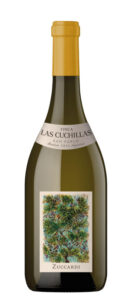 Zuccardi “Finca Las Cuchillas” 2021, San Pablo/Tunuyán Zuccardi “Finca Las Cuchillas” 2021, San Pablo/Tunuyán
The next pairing is, well, not really much of a pairing, in that each was selected as representative of a particular parcel, a small section of the vineyards, and is what the winemakers and family consider to be the “best expression” of that particular plot of land. They’ve experimented with different grapes and settled on one that they think grows best there, and the winemaking techniques are geared to bringing out what they consider its finest qualities.
100% Chardonnay. This wine is just plain too young to drink. The nose is “closed”, so all the aromas are muted, though there’s an intriguing mix of under-ripe pineapple and apple, minerals, and a hint of cinnamon stick. It’s medium bodied, with moderate acidity. At the moment it comes across slightly “hot”, with a bit of an alcohol burn, but I expect in another year or two that will settle out and the fruit flavors will bloom. Save it for, maybe 2026, and serve it up with a roast chicken or ham. This wine is from among Zuccardi’s top of the line offerings of white wines, and retails here around 190-200,000 pesos, or currently about $125-130. |
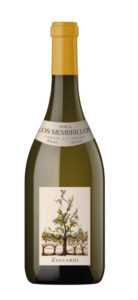 Zuccardi “Finca Los Membrillos” 2019, Paraje Altamira/San Carlos Zuccardi “Finca Los Membrillos” 2019, Paraje Altamira/San Carlos
100% Semillon. A versatile grape variety used to create both dry and sweet white wines. It thrives in regions like France and Australia. When young, Sémillon offers fresh apple and citrus flavors, while with age, it develops richer notes of honey, figs, and toasted nuts. Its fragrant aromas include citrus fruits and subtle minerality. The texture is full-bodied and silky, making it a delightful pairing with fuller dishes and meatier fish. Sweet Sauternes-style versions can age beautifully, sometimes surpassing 50 years in exceptional vintages. One of my personal favorite grapes!
I’m kind of in awe. This wine is simply spectacular. It’s got gorgeous notes of peaches and toasted almond, and a complex background of spices, herbs, and minerals. It’s the kind of wine I want to just sit with and think deep thoughts. Part of me says, don’t pair this with food, it will just take away from the enjoyment of the wine, but we must eat, and this is the sort of white wine that will stand up to many a richer dish. For those who prefer white wine with red meat, this is the one. A perfect steak, a prime rib, a roast leg of lamb – they’ll all work beautifully with this one. While this wine is ready to drink, I think it’s going to age beautifully. If it’s in your budget, grab a few bottles and open one up every couple of years…. Just a touch more expensive than the previous wine, running more in the 200-210,000 peso range, or $130-135. |
